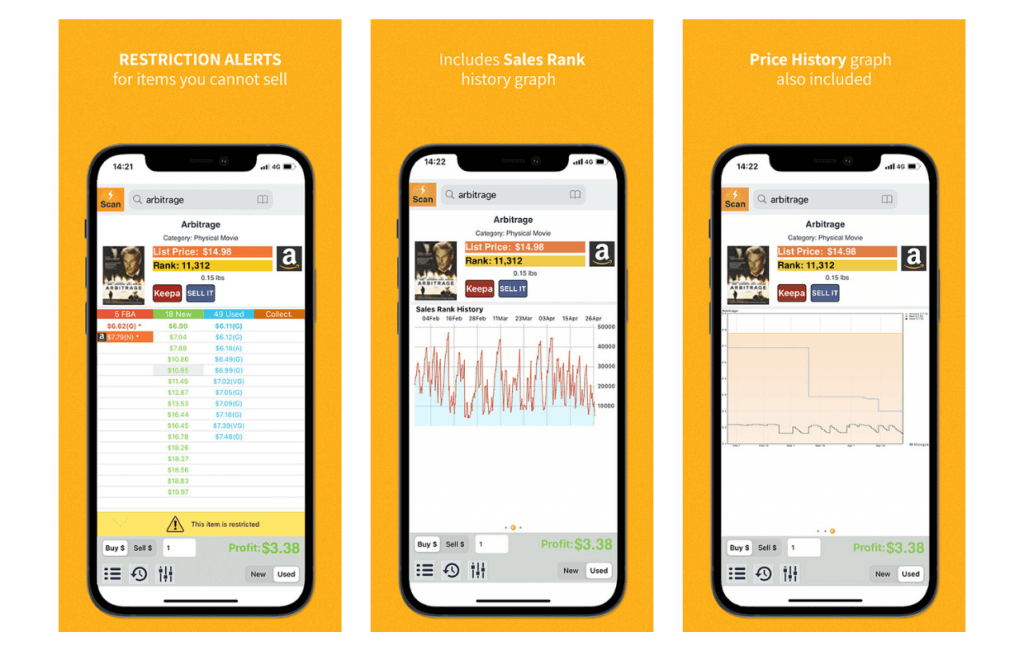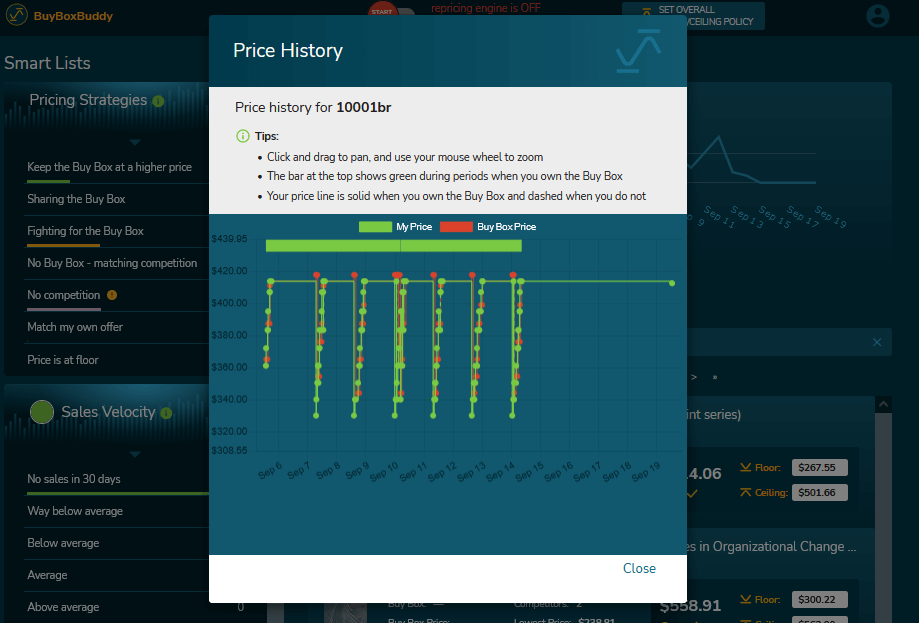
Start dropshipping on Amazon today! This Amazon dropshipping guide shows you how to set up your account, source from trusty suppliers with Profit Bandit, boost profits with BuyBoxBuddy, and get over some of those hurdles.
Sellers have been dropshipping on Amazon ever since the turn of the century. When it launched its third-party marketplace, dropshippers weren’t always above board. But as you’ll find from the official How to Dropship on Amazon guide, it’s perfectly legal to drop-ship, as long as you follow the rules.
What is Dropshipping on Amazon?
Dropshipping is a type of outsourcing. It typically covers order fulfillment. So, when you’re dropshipping on Amazon, you sell your products without stocking or shipping them. As soon as a customer places an order, you forward it to your supplier, who ships the item directly to your Amazon buyer for a fee.
Your dropshipping supplier may be able to manage your relationship with manufacturers, couriers, accountants, etc. But they may also restrict what you sell and the way you list your items. You, in turn, may be able to place restrictions on the sellers they supply with the same products.
Why Choose Amazon for Dropshipping?
Dropshipping lowers your risk, operating expenses, and start-up costs. It also allows you to focus on other areas of business, such as customer service and marketing. What’s more, as a seller, you can leverage Amazon’s sophisticated logistics and integrated services. Finally, you can reach a vast and loyal customer base.
If you don’t mind not having full control over your inventory and its source price, dropshipping on Amazon could be your launchpad for success. With the help of clever e-commerce tools like Profit Bandit and BuyBoxBuddy, you could easily make this business model work for you.
Amazon Dropshipping Policies
Dropshipping on Amazon gives you access to online shoppers and spares you the trouble of managing your stock. But you can only use this kind of setup if you comply with Amazon dropshipping policies. This involves taking responsibility for every order. As the seller on record, you must:
- Make sure that the supplier does not use invoices, packing slips, packaging, or any marketing material in their shipments that features any seller name, business, brand or contact information other than your own.
- Instruct the supplier that they must remove any such material, including the manufacturer’s information, before shipping to buyers.
- Make it clear to buyers that they must contact you and only you if they have any questions or requests. You may need to ask the supplier to insert a contact form or business card in every shipment.
- Regardless of where and who the buyer returns your product to, you must handle all customer returns and reimbursements yourself. So, ideally, you should stay in close contact with the people who process your returns.
- Align with Amazon’s customer service, shipping, and performance standards.
- Fulfill the terms of your BSA.
Step-by-Step Guide to Starting Your Amazon Dropshipping Business
This guide will walk you through the steps you must take to set up, manage, and optimize your Amazon dropshipping business.
1. Set Up Your Amazon Seller Account
Begin by registering as an Amazon seller. The process can differ slightly from one venue to the other, but the tutorial below covers the basics. For more information on the steps and documents required, please read our Amazon Seller Setup Guide. Note that the Professional selling plan is the default option, but you can request a downgrade to the Individual plan after signup, if you don’t expect to sell much right away.
2. Choose the Right Dropshipping Supplier
Your supplier’s reliability is vital. Whether they are a PL manufacturer shipping straight to FBA for you, a 3PL service or an exclusive supplier, they should provide high-quality services. Ask for their certifications and references. Find out if they accept any liability for lost or damaged shipments. Also ask to see their letter of authorization from the manufacturer or brand owner.
They should also provide high-quality products. Use tools like Profit Bandit for Amazon to see if their products are worth selling. First of all, make sure there are no restrictions to selling them on Amazon and that they don’t require special storage conditions. Then check how well they are likely to sell based on historic price and sales rankThe sales rank of products on Amazon ind… More data.
With clear and detailed analytics on sales trends, competitor pricing, and profit margins, Profit Bandit makes finding the right products and suppliers a breeze. It features a new and improved interface with user-friendly controls. So, you can learn the ropes right away and start making informed decisions quickly.

| Note: You should never provide a dropshipping supplier access to your Amazon account. Otherwise, you risk losing control of your account, listings, and funds. |
3. List and Reprice Your Products
We cover the whole gamut of listing tasks in our post titled Listing and Launching Products on Amazon. It takes you through the entire listing process, from buying GTIN codes to optimization. But listing is only part of the story. Pricing is the other; and dropshipping profit margins can be puny without the right dropshipping tools and software.
Using an automated repricer like BuyBoxBuddy is crucial to selling on Amazon. This marketplace is very competitive and most of the sales go through the Buy BoxThis refers to the situation where a sel… More. You simply can’t tweak your prices by hand 24/7 so that they’re small enough to attract customers, but also high enough to earn a profit.

As the name suggests, BuyBoxBuddy is all about winning that Buy BoxThis refers to the situation where a sel… More. It chases it tirelessly, bringing your price to a level that maximizes Buy Box ownership as well as profits. You can upload your items in bulk, set your own price limits (i.e. your red line), and tweak them individually based on price history and other analytics.
The clever BuyBoxBuddy pricing tool adjusts your pricing in real time. It responds to fluctuations in demand, price, and competition before your competitors even get a chance to think about their next move. So, it helps you one-up your competitors and keep your edge.
Another clever feature of BuyBoxBuddy is that it comes with customizable pricing strategies. For instance, you may want it to raise your price as soon as it wins the BuyBox for you, so that you make the most of your time in the spotlight. With it, you can boost profitability and lift your visibility on all major Amazon venues.
Amazon Dropshipping Challenges
If you’re new to dropshipping on Amazon, you may come across several hurdles besides the obvious issues with Amazon dropshipping policies. We’re not just talking about finding the right suppliers, products, or prices here. You should also factor in some of these obstacles:
Startup Costs
As you draft your dropshipping business plan, consider your initial costs. Budget for things like Amazon seller fees, bearing in mind that many FBA fees have risen this year. If you’d rather stick with MFN, you should still be able to cover your selling plan, referral fees, shipping expenses, refund fees, ad costs, etc.
FBA Integration
When it comes to Logistics and Customs, you don’t need to hand over the entire fulfillment process to your supplier. Some suppliers can send inventory straight to Amazon through the FBA or EFN network. Others may require you to sign up for Multi-Channel Fulfillment (MCF) if you sell on multiple marketplaces. If your supplier is based in Asia, you could even outsource international shipping and customs to Amazon Global Logistics (AGL). But these all come with added costs.
Customer Service
In line with Amazon dropshipping policies, you may prefer to coordinate with your supplier so that they process and keep you updated on shortages, damages, and returns. There are clear rules on prepaid returns, returnless refunds, and restocking fees. You must make sure that you and your supplier know the latest conditionProducts can only be listed on Amazon if… More guidelines and returns policies, and that you are on the same page.
Time Constraints
It shouldn’t take more than a few weeks to set up your Amazon dropshipping business, as long as your company is up and running. Dropshipping account setup should take up the lion’s share. So, set aside a few days to negotiate with suppliers and research your dropshipping tools and software while you wait for your new seller account to go live.
You don’t need to have a registered business entity to start selling on Amazon. But it can be beneficial to you in terms of credibility, liability, tax, and access to wider markets (e.g., the Amazon BusinessAmazon Business is Amazon’s wholesale … More B2B service showcased below). It’s best to consult with a legal and tax advisor to find the right setup for your business.
Dropshipping on Amazon can be highly rewarding. Just take care to follow the right steps as you get on with dropshipping account setup, finding suppliers you can count on, and using tools like Profit Bandit and BuyBoxBuddy. Our Amazon dropshipping guide takes you through the basics of setting up a well-oiled Amazon dropshipping business. From here on, it’s all up to you!

Melanie takes an active interest in all things Amazon. She keeps an eye on the latest developments and keeps Amazon sellers up to speed.





